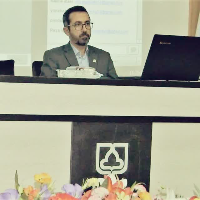Narrative Reading of the Quranic Story of Noah (pbuh) based on the Theory of Grimas Discourse System
Sign-semantics is one of the domains of the discourse system that studies the mechanisms of formation and production of meaning in texts. Algerdas Grimas, a French semantist, has tried to provide a coherent model for the study of narrative and story in the field of the semantic sign of discourse. According to Grimas, discourse systems are divided into three categories: intelligent discourse, emotional discourse, and event discourse. In this article, using analytical-descriptive method, the types of discourse systems mentioned in the story of Prophet Noah (AS) have been studied. Due to the nature of the narrative discourse, this story contains numerous value-oriented aspects and actions and is noteworthy for examining the semiotics-semantics of the ruling systems in it. In this research, the desired action of the Imam, ie communicating and promoting the legitimacy and oneness of God, is shown with the help of sign-semantics. . The analysis of the action system of the speech of Prophet Noah (pbuh) shows that the first core of the narration is the action of the divine order to call for the monotheism of religion and abandon false gods. The analysis of the emotional system of the discourse of Prophet Noah (pbuh) shows that the elements of the emotional discourse produce the two concepts of teaching the program of religion and servitude and the transmission of the hegemonic discourse of the righteousness and unity of God. The analysis of the tension system of the Prophet's discourse shows that despite his logical words and enlightening discourse, he increases the knowledge of a small number of his companions, and with the increase of knowledge, their faith in the words of the divine saints increases simultaneously.
-
A critical discourse analysis study of Barid Al-Lail (explanation and interpretation levels)
*, Reyhane Emami Chahartagh
Studies in Arabic Narratology journal, -
The semantics of the word “dispute” based on the seven types of Izutsu's simultaneous semantic theory
Sakineh Mosavi Asl, Shaker Ameri *, Ali Akbar Noresideh
Journal Of Linguistic and Rhetorical Studies,


